Tips to See Angkor Wat Sunrise: The Ultimate Guide
Watching the first rays of light illuminate the ancient spires of Angkor Wat is a moment that stays with you forever. It's an experience that transcends a simple photo opportunity; it’s a connection to history, nature, and the serene beauty of Cambodia. Imagine sitting in the quiet dawn, a warm drink in hand, as the sky transforms from deep indigo to vibrant shades of pink and orange, revealing the temple’s majestic silhouette. This breathtaking spectacle is on many a traveler’s bucket list, and for good reason. It’s a chance to witness one of the world's most incredible wonders come to life. To help you make the most of this unforgettable moment, we’ve put together the ultimate guide. Follow these tips to see the Angkor Wat sunrise and create a memory that will last a lifetime.
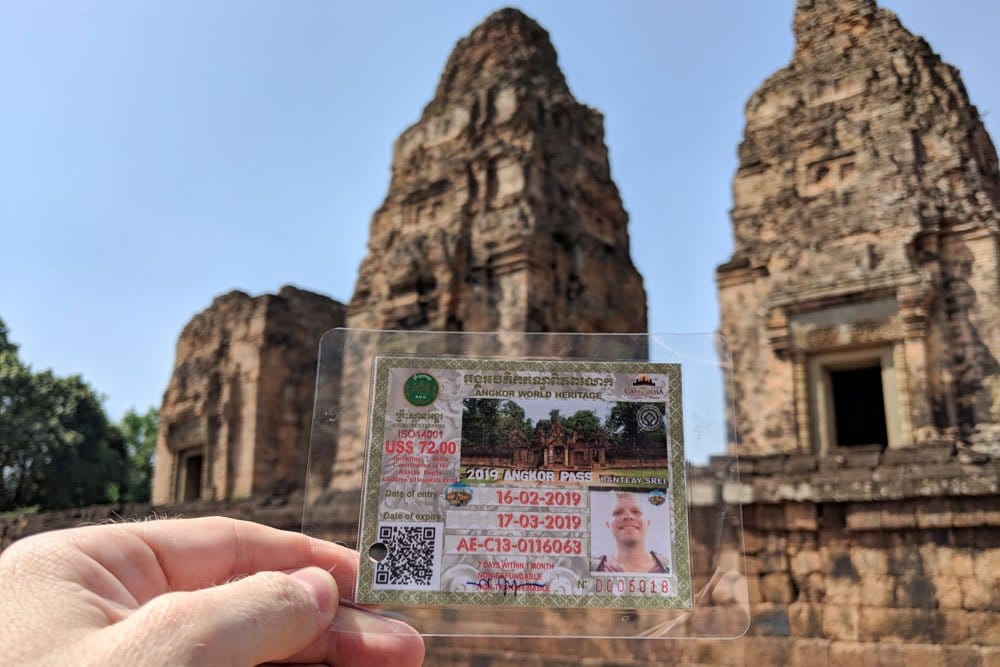
Plan Your Visit: Tickets and Timing
A little preparation goes a long way in ensuring your sunrise experience is smooth and stress-free. The last thing you want is to be rushing around in the pre-dawn darkness.
Purchase Your Angkor Pass in Advance
To avoid unnecessary morning stress, it's a great idea to purchase your Angkor Pass a day or two before your visit. The main ticket office is located on Street 60, a few kilometers from Siem Reap’s town center. While it opens at 5:00 am until 5:30 pm, buying your ticket ahead of time means you can head straight to the temple without delay.
Alternatively, you can now purchase your Angkor Pass online through the official portal. This is a game-changer, allowing you to bypass the queues entirely and giving you more time to find the perfect spot for the sunrise.
Angkor Pass Options:
- 1-Day Pass: $37 USD
- 3-Day Pass: $62 USD (valid for 10 days)
- 7-Day Pass: $72 USD (valid for one month)
Click here to get your ticket today >>
Important Tip: Always keep your pass with you. You will need to show it at various checkpoints throughout the Angkor Archaeological Park. Keep it in a safe, easily accessible place, as a lost pass cannot be replaced; you will have to purchase a new one.
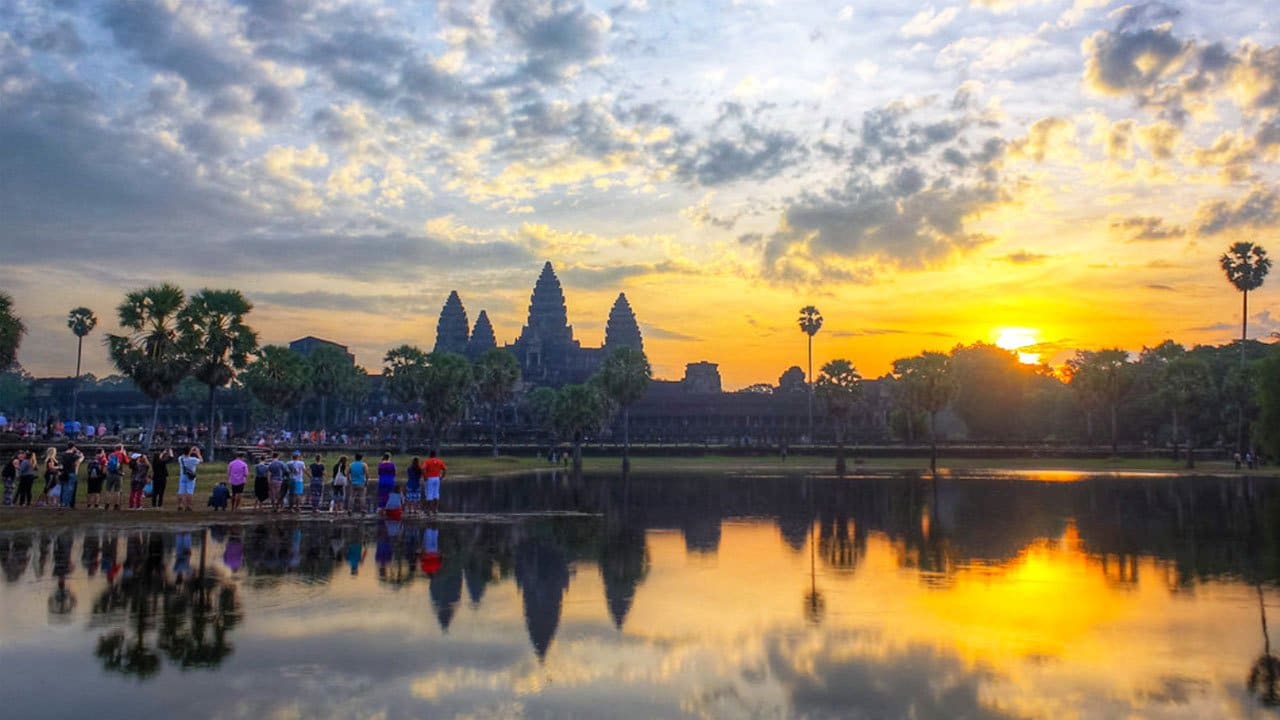
When is the Best Time to Visit Angkor Wat for Sunrise?
For the most spectacular sunrise, timing is everything. Weather plays a significant role, and the best conditions are typically found during Cambodia's dry season, which runs from December to March. During these months, the skies are generally clear, rainfall is minimal, and the temperatures are pleasant.
However, this is also the peak tourist season, which means you'll be sharing the experience with many other visitors. If you prefer to avoid the largest crowds, consider visiting on a weekday rather than a weekend. The shoulder seasons (April-May and October-November) can also offer beautiful sunrises with fewer people, though there's a slightly higher chance of rain.
No matter when you go, it's essential to check the exact sunrise time for your chosen day. A quick Google search for "Angkor Wat sunrise time" will give you the precise moment to expect the sun.
Here are some useful tips to see Angkor Wat Sunrise:
Ready to make it happen? Here are our top tips for a flawless Angkor Wat sunrise experience.
1. Start Your Day Early
The temple gates open at 5:00 am, and you’ll want to be there right as they open. We recommend leaving your hotel in Siem Reap no later than 4:30 am. This early start guarantees you’ll have enough time to get through the entrance, walk to the main viewing area, and secure a prime spot before the crowds arrive. An added bonus of arriving early is the chance to capture photos of the temple against the dark sky, illuminated only by the moon and stars.
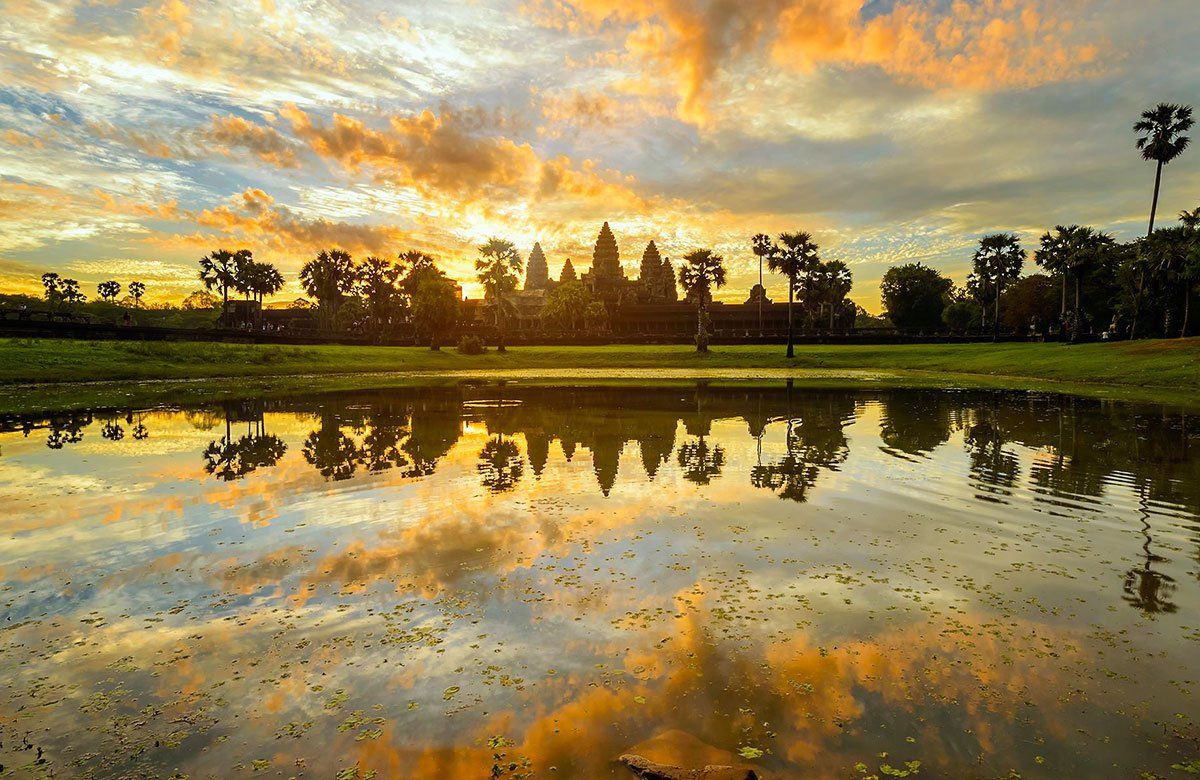
2. Best Angkor Wat Sunrise Spots
The most iconic and sought-after location to watch the sunrise is from the edge of the northern reflection pool, located just inside the western entrance of the main temple complex. From here, you can capture the classic shot of Angkor Wat’s five towers perfectly mirrored in the still water as the sky changes color.
To get the best vantage point, position yourself at the front left corner of the pool. This spot gets crowded quickly, so arriving early is crucial. Once you have your iconic shots, don't be afraid to wander. Explore the southern reflection pool for a slightly different, often less crowded, perspective. Walking along the edges of the causeway or even stepping back towards the entrance can offer unique and beautiful compositions.
3. Pack Your Bag the Night Before
Nothing ruins an early morning faster than a frantic search for essentials. Pack everything you need the night before so you can simply get dressed and go.
What to pack:
- Your Angkor Pass: The most important item!
- Camera and/or Smartphone: Ensure your batteries are fully charged and you have plenty of memory space.
- A Small Torch or Headlamp: The grounds are dark before sunrise, and a light will help you navigate the uneven paths safely.
- Comfortable Clothing: Lightweight, breathable fabrics are ideal.
- Water Bottle: Staying hydrated is key, especially as the day heats up.
- Insect Repellent: Mosquitoes can be active in the early morning.
- Snacks or Breakfast: Pack a breakfast box or some light snacks to enjoy while you wait.
- Small backpack: To comfortably carry all your essentials.
- Hand sanitizer: For quick clean-ups, especially before eating.
- Portable charger/power bank: To keep your devices juiced up throughout the day.
- Hat and sunglasses: For protection once the sun is up.
4. Dress Respectfully
Angkor Wat is a sacred religious site, and it's important to dress with respect. The dress code requires that your shoulders and knees be covered at all times. This applies to both men and women. Avoid wearing tank tops, shorts, or short skirts. A lightweight long-sleeved shirt, long pants, or a long skirt are perfect options. A scarf or sarong can also be a versatile item to have on hand to cover up if needed. Adherence to the dress code is strictly enforced, and you may be denied entry to certain areas if you are not dressed appropriately.
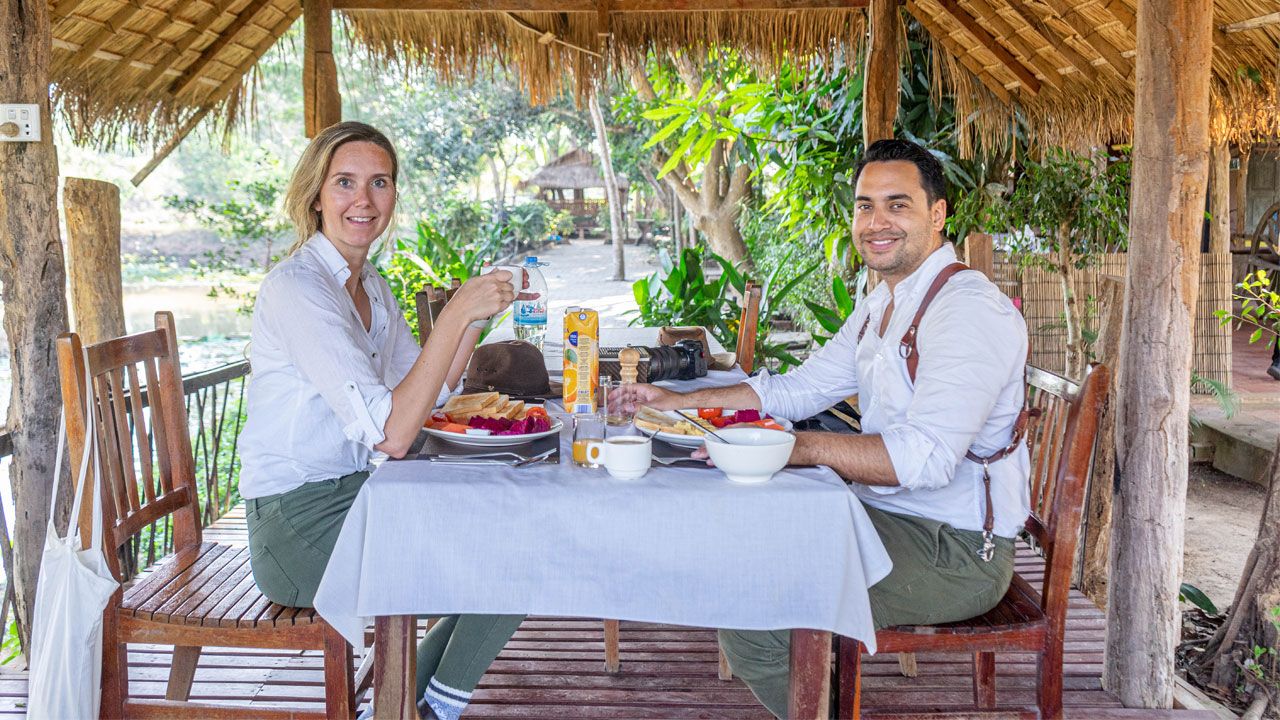
5. Plan for Breakfast
After an early start, you’ll definitely be ready for breakfast. You have a few options:
- Ask your hotel: Many hotels in Siem Reap can prepare a takeaway breakfast box for you.
- Pack your own: Bring some fruit, granola bars, or pastries from a local bakery.
- Eat at the park: Several local food stalls and small restaurants are located just outside the main temple complex. They open early and serve delicious Cambodian breakfast dishes like noodle soup or rice porridge, along with coffee and tea.
- Start your day at a local café: Siem Reap boasts plenty of charming cafés where you can enjoy a fresh, hearty breakfast before exploring Angkor Wat. For a convenient option, Starbucks has recently opened a new location in front of the Angkor Wat temple, offering coffee and bakery treats to kickstart your morning.
- Try a local market: Stop by a morning market to experience authentic Cambodian street food, from fresh baguettes to fried bananas.
- Opt for a picnic: Pack a breakfast and enjoy it in one of the quieter temple areas while soaking in the peaceful surroundings.
6. Toilets Around Angkor Park
If you're visiting Angkor Park, it's helpful to know where the restroom facilities are located. Here’s a guide to the available toilets around the park for your convenience:
- Angkor Wat: Restrooms are located near the main entrance. A small fee may apply for their use.
- Bayon Temple (Angkor Thom): Toilets can be found near the parking area.
- Ta Prohm: Facilities are located near the entrance and ticket check area.
Tips:
- Carry small change, as some toilets require a small fee (typically $0.15–$0.25).
- Restrooms are generally clean, but having tissues or hand sanitizer on hand is always a good idea.
- Ask park staff or your tour guide for the nearest restroom location, especially in less-visited areas of the park.
- Plan your bathroom breaks when visiting smaller or remote temples, as restrooms may not be available everywhere.
7. Explore After Sunrise
Once the sun is up and the main show is over, don't rush back to your hotel. The hours just after sunrise are one of the best times to explore the vast grounds of Angkor Wat. The temperatures are still cool, the light is soft and beautiful for photography, and the largest crowds have often dispersed. Take this time to wander through the temple's galleries, climb its towers, and admire the intricate bas-reliefs that tell ancient stories. Consider hiring a local guide to provide historical context and fascinating insights into the carvings and architecture. They can also lead you to less crowded spots and hidden gems within the complex.
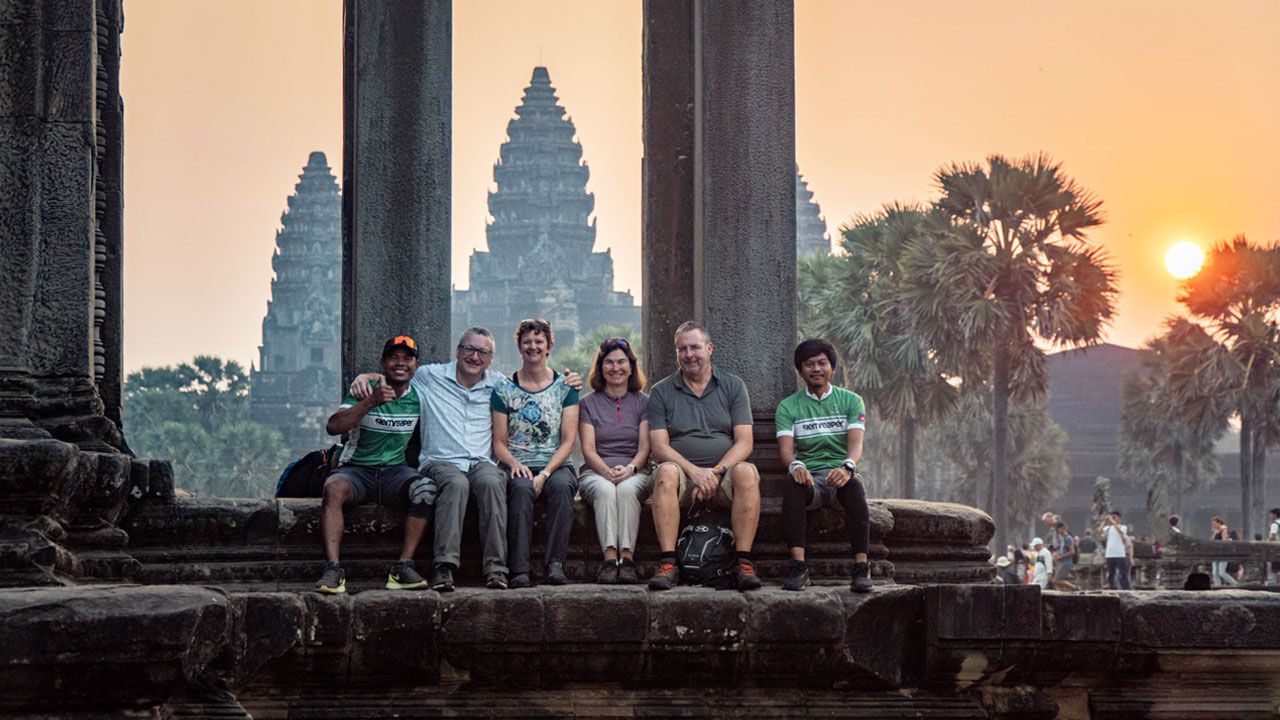
8. Best ways to get to Angkor Wat
- Hire a private car: Perfect for those who value convenience and speed. A private car allows you to travel comfortably, avoid the heat, and cover more ground in less time. Many private car services also include knowledgeable drivers who can provide insights about the area.
- Enjoy a local tuk-tuk: For a truly authentic experience, hop on a tuk-tuk. This iconic mode of transportation is affordable, fun, and gives you a chance to take in the sights and sounds along the way. Tuk-tuk drivers are often locals who can share tips and recommendations for exploring Angkor Wat.
- Rent a Bicycle: Perfect for active travelers, renting a bicycle allows you to explore Angkor Wat at your own pace while soaking in the stunning scenery. Start early to beat the midday heat, and don’t forget to bring plenty of water for the journey!
- Join the Bike Tour: For a guided and immersive experience, join the Angkor Sunrise Bike Tour with Siem Reaper Travel. Led by local experts, you'll explore the iconic Angkor temples at a relaxed pace, gaining cultural and historical insights as you cycle from one stunning site to the next. Don't miss this unforgettable journey!

Beyond Angkor Wat: Exploring Other Temples
After soaking in the grandeur of Angkor Wat, the adventure doesn't have to end. The Angkor Archaeological Park is home to hundreds of other incredible temples. To avoid temple fatigue, we suggest visiting several temples near Angkor Wat:
Top temples to visit near Angkor Wat:
- Angkor Thom and Bayon Temple: Just a short drive from Angkor Wat, the ancient city of Angkor Thom is a must-see. At its heart is the Bayon Temple, famous for its 216 giant, smiling stone faces.
- Terrace of Elephants: A stunning site within Angkor Thom, this 300-meter-long terrace features intricate carvings of elephants and serves as a reminder of the grandeur of royal processions.
- Victory Gate: One of the five gates leading to Angkor Thom, this gate is beautifully adorned with carvings and offers a quieter, peaceful alternative to the South Gate.
- Ta Keo Temple: A majestic sandstone temple with steep steps and breathtaking views from the top, perfect for those ready for a short climb.
- Ta Prohm: Known as the "Tomb Raider" temple, Ta Prohm has been left partially swallowed by the jungle. Gigantic tree roots wrap around its stone walls, creating a magical and mysterious atmosphere.
- Banteay Kdei: Often overshadowed by its neighbor Ta Prohm, Banteay Kdei is a peaceful, less crowded temple known for its intricate carvings and tranquil atmosphere.
- Srah Srang: End your exploration with a local lunch near Srah Srang, the "Royal Bath," a serene reservoir that offers a peaceful spot to relax and soak in the beauty of the surroundings.
Related Post: Guide to Angkor Temples: Before you visit Angkor Wat, here’s what you need to know
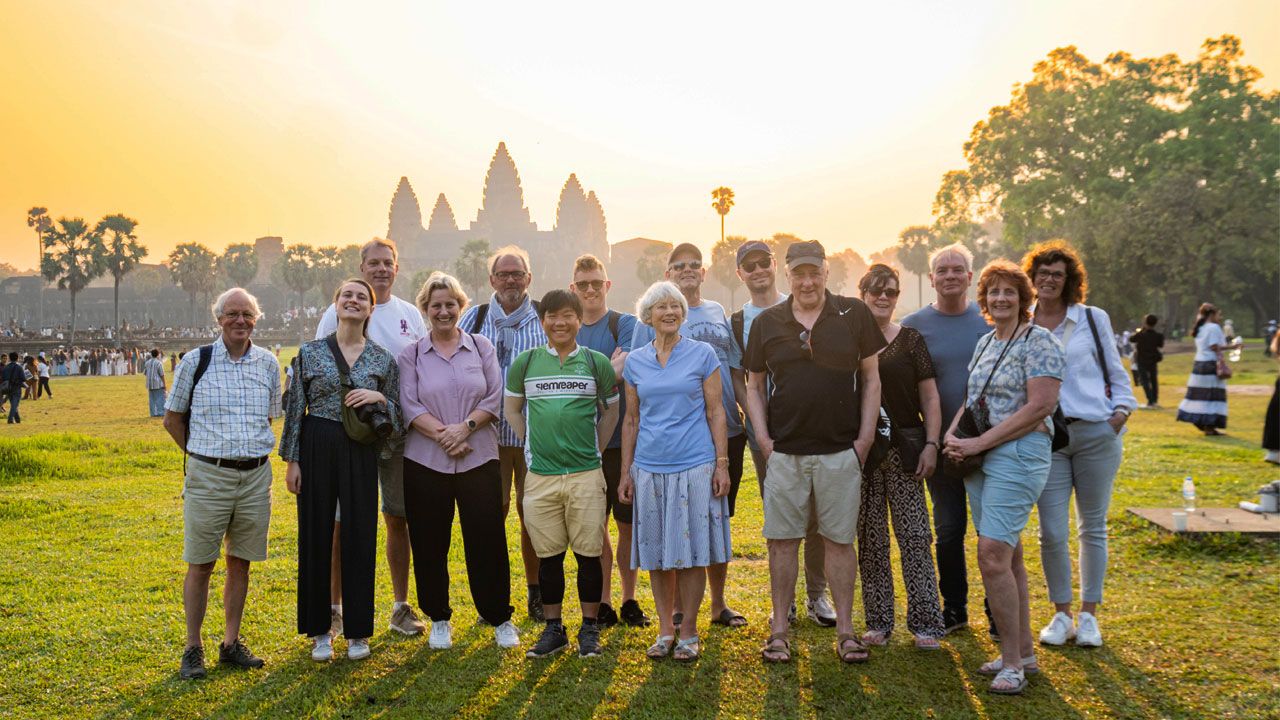
Make Your Angkor Wat Dream a Reality
Witnessing the sunrise over Angkor Wat is more than just a travel moment; it's an experience that awakens the senses and inspires the soul. As a local, I have seen this sunrise countless times, and its magic never fades. It’s a powerful reminder of the beauty and history that Cambodia has to offer.
Remember that the weather can be unpredictable, so a multi-day pass is a great option in case your first attempt is cloudy. But most importantly, while capturing photos is wonderful, don't forget to put your camera down. Be present, breathe in the morning air, and let the sheer magnificence of the moment sink in.
Travel Articles
Read the local stories, and get travel advice from our Travel Specialist. We have lived through our experience and wanted to bring first hands-on exploration through the local insider.
